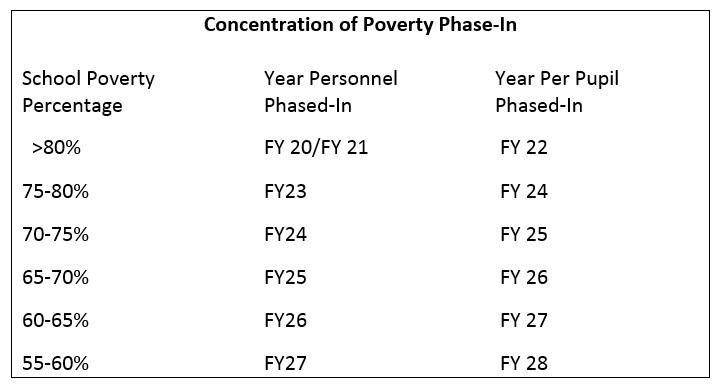Blueprint Explainer: Community Schools
Breaking Down the Blueprint for Maryland’s Future
This is part of a series of articles explaining what’s in the Blueprint for Maryland’s Future (HB 1300/SB 1000) as introduced. Look for other articles on salaries and staffing, career and technical education, pre-k, and more.
The Blueprint for Maryland’s Future addresses the reality that for too many students, factors outside the classroom impede success within it. The Blueprint calls for and funds community schools in high-poverty areas to provide wraparound services that help remove obstacles to academic success, encourage family engagement with the school, and deliver basic services that are too often unavailable to children living in communities of concentrated poverty.
Through an inclusive needs assessment and a school-based coordinator, a community school provides wraparound services to meet a wide range of a child’s and family’s outstanding needs — academic, health, nutritional, linguistic, psychological, and more.
The community school model works. Community schools in Baltimore and New York have documented school-wide positive effects on academic performance, family and community engagement, attendance, absenteeism, and discipline and health issues.
Community Schools and Poverty
Community schools are particularly well-designed to aid impoverished communities, which is exactly how the Blueprint approaches their funding. Statewide, 45% of Maryland students now live in poverty. Many experience hunger, abuse, neglect, fear, inadequate healthcare, the effects of institutional racism, trauma, and numerous adverse childhood experiences (ACEs) before they enter school.
Unfortunately, the proportion of students in poverty has increased greatly since Maryland implemented its current funding formula. Since 2003 (the first year of the current formula’s implementation), there has been a marked increase in the free and reduced-price meals (FARMs) rate of Maryland students: a 59% increase in students receiving free meals and a 40% increase in students receiving free or reduced-price meals.
Concentration of Poverty Funding
The Blueprint recognizes that student poverty is growing, and that it can be particularly harmful to students to be surrounded by poverty. Therefore, the Blueprint proposes new concentration of poverty funding to support intensive coordinated services — in addition to having a community schools coordinator and health practitioner — for students in schools that have a high concentration of student poverty. These new dollars would be delivered directly to the school by the state, avoiding any chance for the funding to be redirected prior to reaching the school.
The Blueprint phases in community schools beginning in FY20, starting with 219 schools with 80% or more concentration of poverty. Community schools will be added, phased in according to highest levels of poverty first, until FY27, when a predicted 557 — nearly one-third of all schools in the state — are projected to become community schools. That makes this one of the largest scale expansions of community schools in the nation’s history.

In addition to funding community school coordinators and health practitioners at community schools, the Blueprint designates per pupil funding in the amount of $3,374.48 (to be adjusted annually for inflation) to go to schools with between 55% and 80% concentration of poverty and applied on a sliding scale of the full per pupil amount for schools with 80% FARMs rate and less per pupil for schools down the scale.
This holistic approach requires substantial resources — human and material — to implement it, but would provide much-needed services and essential support to students most in need. The ten-year vision contained in the Blueprint for Maryland’s Future must pass the General Assembly to fulfill the promise of equitable opportunities for all of our students.
The Time to Act Is Now
Click here to email your legislators and urge them to pass the Blueprint and a new funding formula that will be a game-changer for our students and schools.
For further information about community schools and concentration of poverty grants in the Blueprint, see pp. 31, 148–153, and 220 of the bill at this link.

